How To Sell Courses on Shopify: A Beginner’s Guide to All the Basics
Shopify is the best platform for selling your online courses and earning passive income. Here is a step-by-step guide on how to sell courses on Shopify.
Shopify is the best platform for selling your online courses and earning passive income. Here is a step-by-step guide on how to sell courses on Shopify.
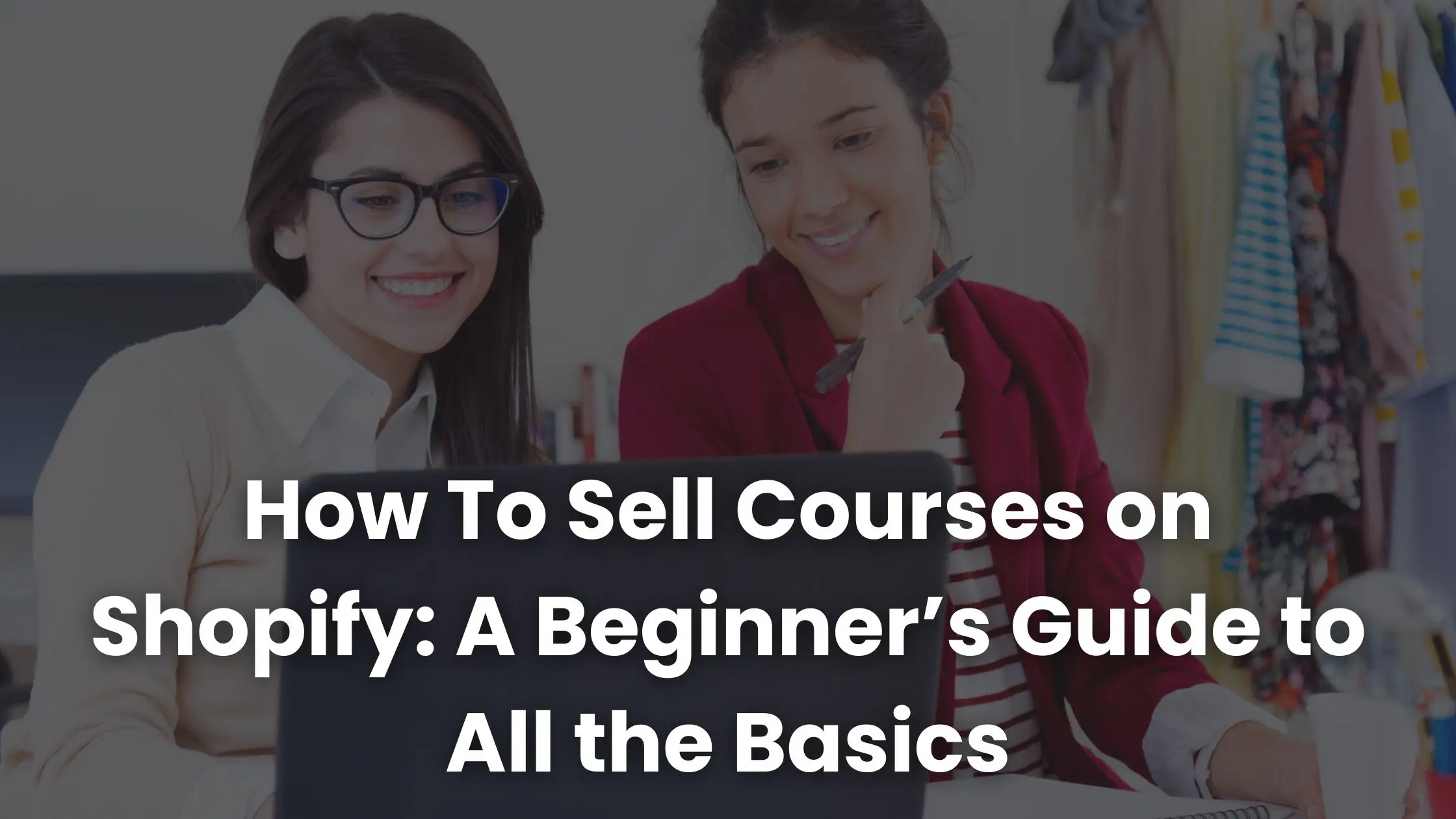
Are you looking to turn your knowledge into a thriving online business but feeling overwhelmed by the technical steps? You’re not alone. Many aspiring course creators struggle to figure out how to package, market, and sell their courses online.
It makes sense. With so many platforms and tools available, it can be confusing to know where to start, especially if you want a professional and seamless experience for your learners.
The good news? Shopify makes it surprisingly simple to set up an online store and start selling digital products like courses. With Shopify Courses Plus, you can get started even if you’re a complete beginner.
In this guide, we will explore the essentials of getting your course store up and running on Shopify, from creating product listings to marketing your courses successfully. Let’s learn how to sell courses on Shopify without any physical and mental stress.
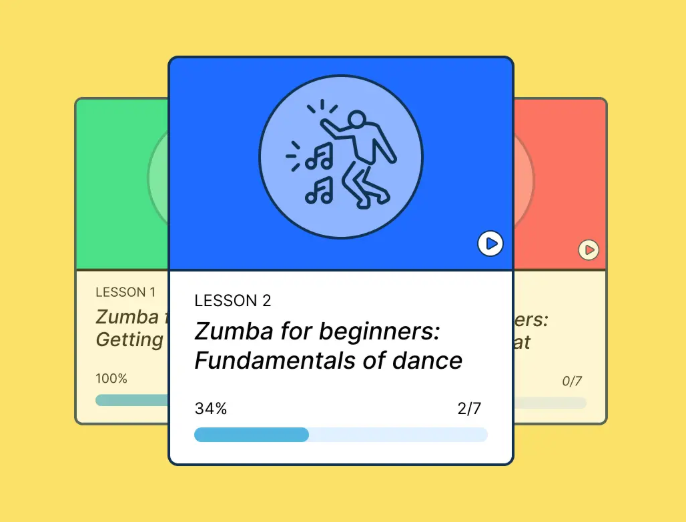
Understanding the basics is always the best move to get started. Here’s what you need to get ready and understand before launching your course store on Shopify:
The first step is creating your Shopify account and setting up your store. When you create your store, you’ll select a unique name that reflects your brand or course topic, making it easier for future learners to identify your offerings.
It’s important to ensure your site is mobile-friendly, as many customers browse and purchase on smartphones. Setting up navigation menus and essential pages like “About” and “Contact” builds credibility and makes your store easy to explore.
Before listing any courses, it’s crucial to decide what niche you’ll serve. Your niche should align with your expertise and a clear learner need. Defining precise learning objectives will help you stay focused and create valuable content that delivers real results.
The more structured and comprehensive your content, the more confident buyers will feel about investing in your course.
With Shopify, you add your course just like any other product, but with some digital-specific options. Your course product page should include detailed descriptions, benefits, and sneak peeks such as sample videos or lesson outlines to attract and inform potential buyers.
Make sure to mark it as a digital product to disable shipping options and set delivery to instant or automatic after purchase.
Deciding how you price your course requires considering your audience and competitors. Some trainers opt for one-time payments, while others prefer subscriptions or bundling multiple courses for more value.
Shopify supports flexible pricing and various payment gateways, making it easy to accept credit cards, PayPal, and digital wallets worldwide. You’ll also set up tax and currency details based on where you sell your courses to comply with legal regulations and provide smooth transactions.
Trust is key to convincing buyers to purchase your online courses. Shopify provides tools to create essential pages, such as refund policies, privacy statements, and terms of service, to protect both you and your learners.
Clear policies help manage expectations around course access, cancellations, and data security, making customers more comfortable buying from your store.
Now that you understand the basics, it’s time to do some practical work. Follow these steps to learn how to sell courses on Shopify:

To create a Shopify account, visit the Shopify website and click the “Start free trial” button.

Enter your email address, create a password, and choose a memorable store name. Make sure it clearly indicates your niche.
Let’s suppose you’re a fitness coach who wants to help busy professionals stay healthy at home. You can choose “FitHomeCourses” as your store name, as it reflects your niche and easily tells potential learners what you offer.

Once registered, Shopify guides you through the initial setup process, including selecting a plan that fits your needs.
After creating your account, you will have to choose a theme that reflects your brand. Shopify offers a variety of free and paid themes optimized for user experience and mobile responsiveness.
As a fitness expert, you should choose a simple, energetic theme that aligns with your niche. Customize it by uploading your logo, adjusting colors, fonts, and layout options for easy navigation. This branding creates trust and makes your store memorable.
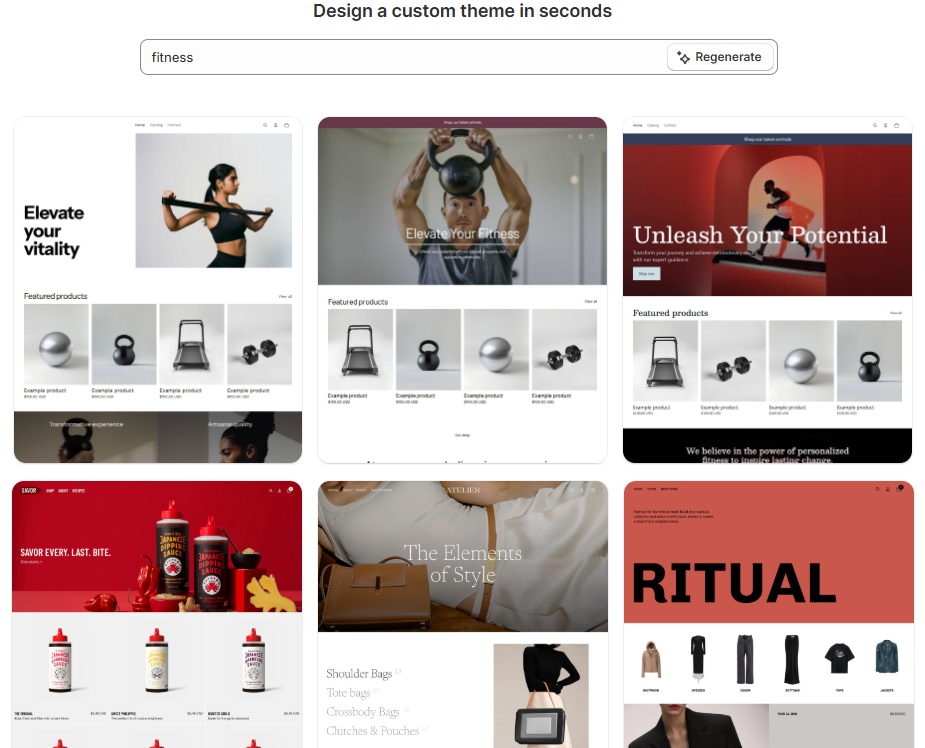
To sell a course, add it as a product in your Shopify dashboard. Let’s say you named your signature program “Home Workout Basics.” You should add it to the store by going to the Products tab, clicking Add product, and entering a compelling title and detailed description.
Make sure to write a clear, benefit-driven description focused on how your course helps people build fitness routines without leaving home. To excite visitors, you can even upload a teaser video showcasing sample exercises and a downloadable workout plan.
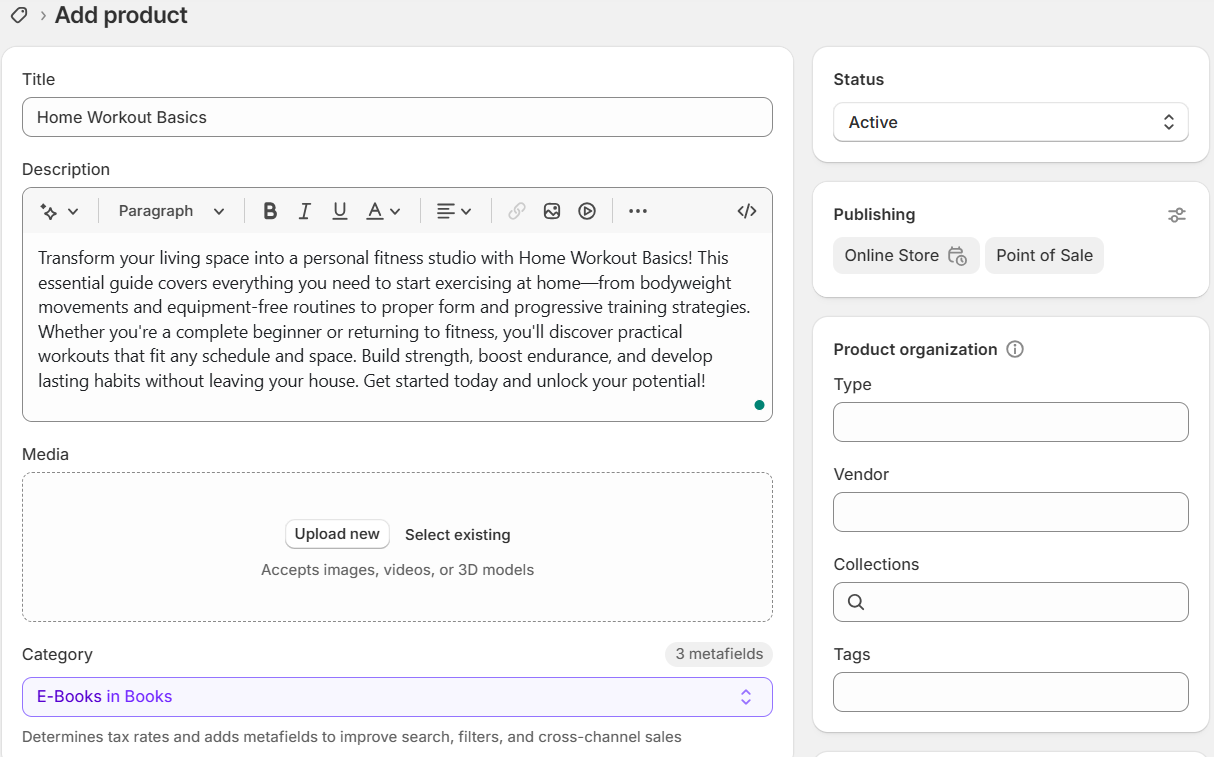
Mark the course as a digital product if you host the content on your site or linked platforms. This step makes your course available for purchase and instant access.
Now, choose the gateways that suit your target audience and enable them through your store’s admin panel. You can enable multiple payment options in your Shopify dashboard, including credit cards, PayPal, and Apple Pay.

These trusted gateways reassure your customers that they will enjoy a smooth, secure checkout experience.
The next step is to craft transparent store policies using Shopify’s templates. You can offer a 14-day money-back guarantee and a clear privacy policy to protect learner data. Make sure to outline clear terms of service regarding course access, usage, and refunds.
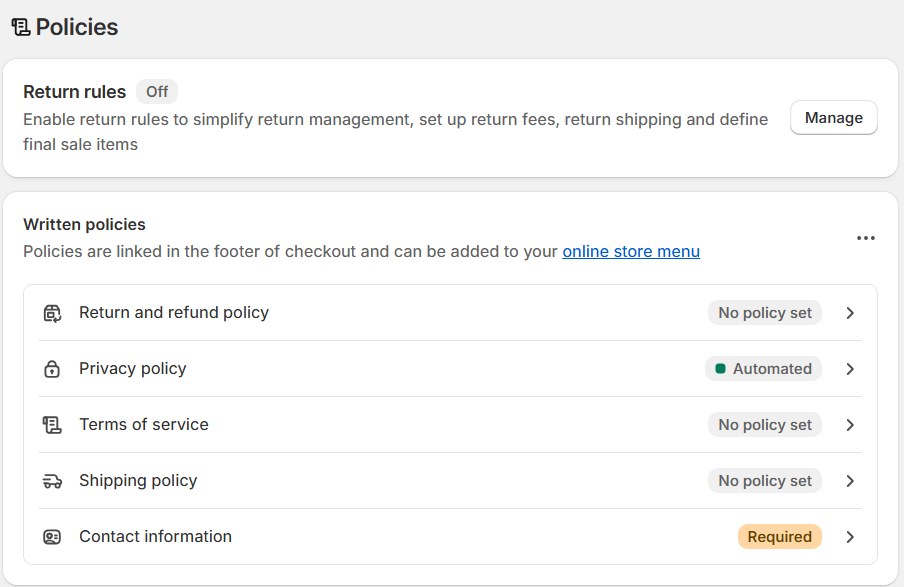
This transparency helps reduce disputes and builds learner trust.
Finally, test your store by making a mock purchase. Ensure every link, video, and payment option works flawlessly. Next, optimize the store’s SEO settings with keywords like “home workout courses” to help learners find you through search engines.

Once everything looks good, connect your custom domain “FitHomeCourses.com”, and launch your store. Preview your entire site to confirm everything is functioning smoothly.
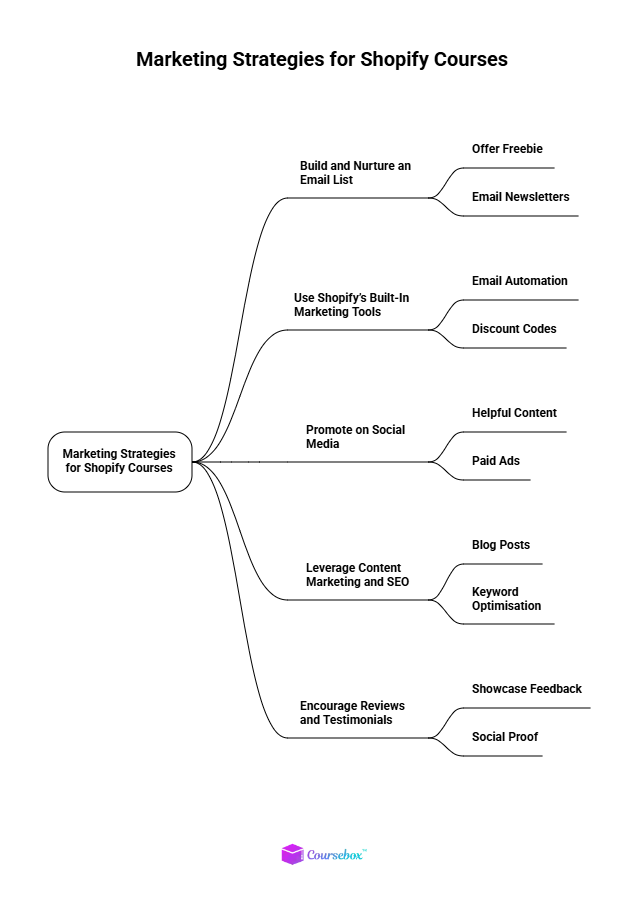
Marketing is the key to turning your course store visitors into paying learners. Here are some effective marketing strategies to grow your Shopify course sales:
One of the most powerful marketing assets is a targeted email list. Let’s go back to our fitness trainer example. You can encourage visitors to sign up for a free “7-Day Fitness Kickstart” guide through a pop-up on your website.
Doing so will help you collect interested leads who you can nurture through regular newsletters and course updates. Email marketing allows you to share valuable content, announce course launches, and offer exclusive discounts, keeping your audience engaged and ready to buy.
Shopify offers a range of built-in marketing features and apps that help create campaigns, automate email sequences, and track performance. You can use Shopify’s discount code generator to launch special promotions like “New Year Fitness Sale,” driving urgency and boosting purchases.
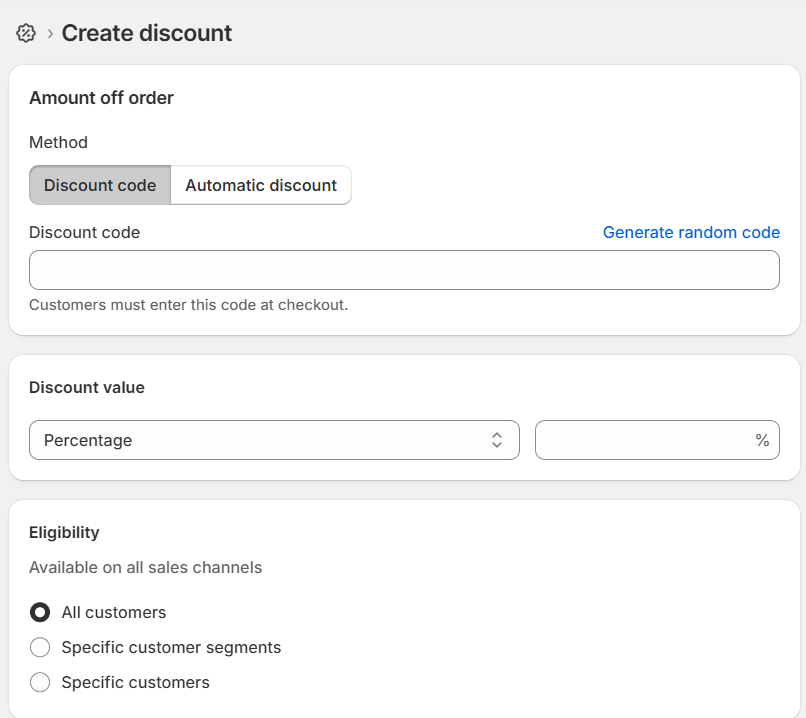
As a bonus, you can also connect your store to social media platforms via Shopify apps, making it easy to post updates and ads.
Social media is essential for visibility and building trust. Make sure to regularly post workout tips and success stories on Instagram and Facebook. With that, run Facebook ads targeted at busy professionals interested in fitness.
Creating engaging content on social platforms can grow your community organically and attract learners to your Shopify course store.
Content marketing includes creating blog posts, videos, or podcasts related to your course topic. It drives organic traffic to your Shopify store. You can create high-quality content on “Home Workouts for Beginners” that ranks on Google, attracting users searching for fitness solutions.
Make sure your store and content are optimized with relevant keywords. That’s critical to improve your store’s search engine rankings.
Social proof influences buying decisions. Collect testimonials from satisfied learners and feature them prominently on your product page and in marketing emails. Positive reviews build credibility and reassure potential buyers of your courses' value.
Integrating AI-powered tools like Coursebox with Shopify can simplify your online course sales and management. All you have to do is create an online course on Coursebox, add it to your store, and sell it. It’s that simple.
Now that you know how to sell courses on Shopify, you can integrate Coursebox with Shopify for a seamless experience in selling, managing, and delivering your courses. This video explains the process in the easiest way:
Ready to launch your course store on Shopify? Sign up for free now to get started!
Yes, Shopify is designed for users of all technical levels. Its user-friendly interface and extensive support resources make it easy to set up a store and add digital products, such as courses, without coding experience. Plus, Shopify offers a range of plugins that let you set up vouchers, discounts, and coupon codes, and even membership plugins to charge for recurring access to various courses.
Popular pricing models on Shopify include one-time payments, subscription access, and bundled course packages. Consider your audience’s budget, the depth of your content, and market competition. Testing different prices and offering promotions can help identify the most effective strategy to maximize sales.
Absolutely. Transparent refund and privacy policies build customer trust and protect you legally. Shopify makes it easy to create these policies tailored for digital products, helping set clear expectations and reduce disputes.
Coursebox integrates seamlessly with Shopify to automate course creation, selling, and marketing. Its AI-powered tools help generate courses faster, with interactive features and 24/7 learner support bots. This integration streamlines course management and provides a professional, engaging learning experience.
Yes. Shopify supports global payments, tax calculations, and multiple currencies. Pair it with an LMS that supports multilingual content and you can sell to international students without any additional setup.
Anything you’d include in a typical online course: videos, quizzes, interactive activities, downloadable resources, assessments, and even AI-generated lessons. The delivery platform you connect to Shopify determines the types of content you can host.
